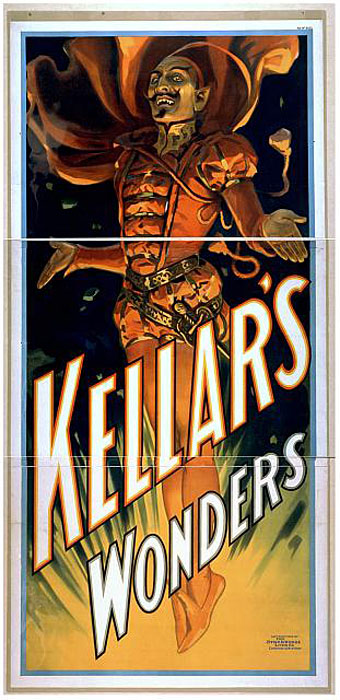
The stage variety rather than occult practitioners. The levitating Mephistopheles above is the one I borrowed earlier this year for the Alas Vegas Tarot designs. “Kellar” was Harry Kellar (1849–1922), a popular American magician blessed with some talented poster designers who stripped away the superfluous text to concentrate on his name and the recurrent motif of a red devil. Considering their age (they date from around 1900) these posters are surprisingly elusive, with no indication on some of them that Kellar is a stage performer at all. He retired in 1908 so by this time his name alone was evidently enough of an audience draw.
Howard Thurston was Kellar’s appointed successor, hence the continuity of the red devils and type design. Devils and imps weren’t the sole property of the pair as the other examples here demonstrate. “Miss Baldwin” is a rare example of a woman achieving parity with her male colleagues, at least in the poster department. All these posters are from the collection at the Library of Congress where many more examples may be seen. A detail from the horizontal Kellar poster below appears on the cover of the recent lavish Taschen volume Magic: 1400s–1950s by Mike Caveney, Jim Steinmeyer, Ricky Jay and Noel Daniel.
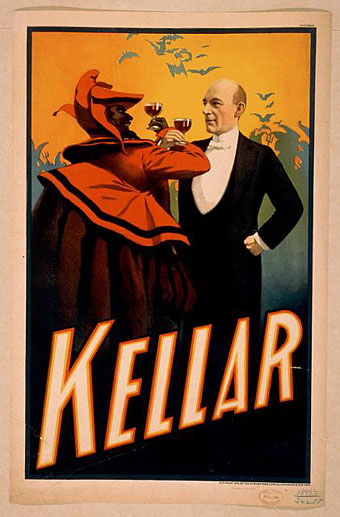
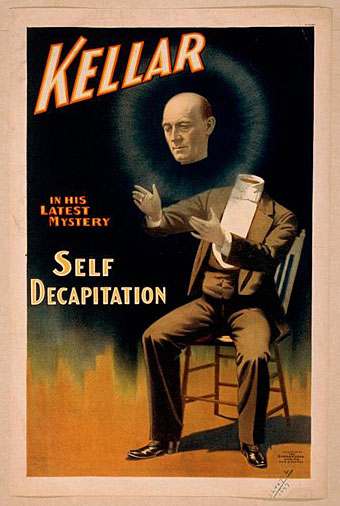
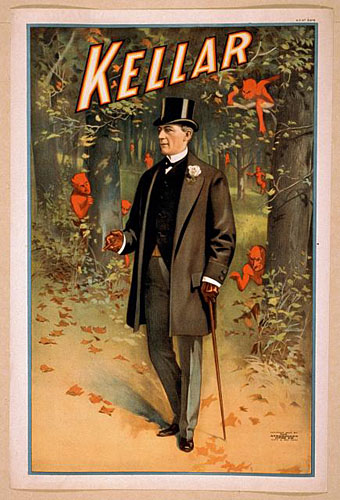
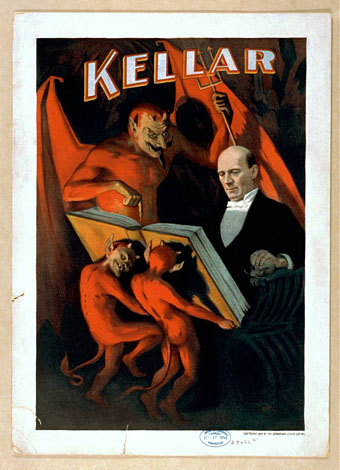
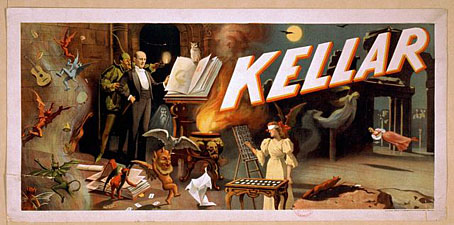
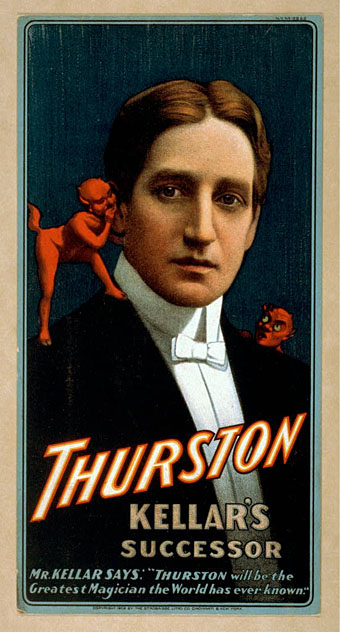
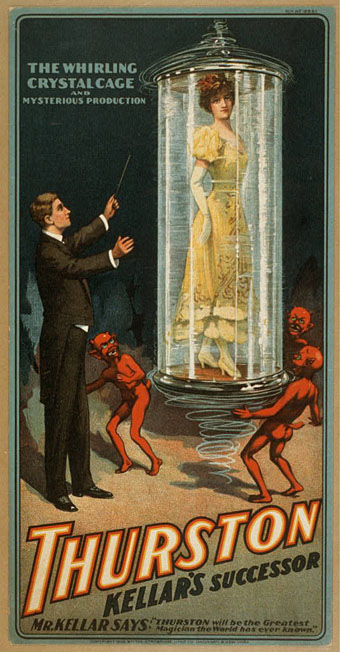
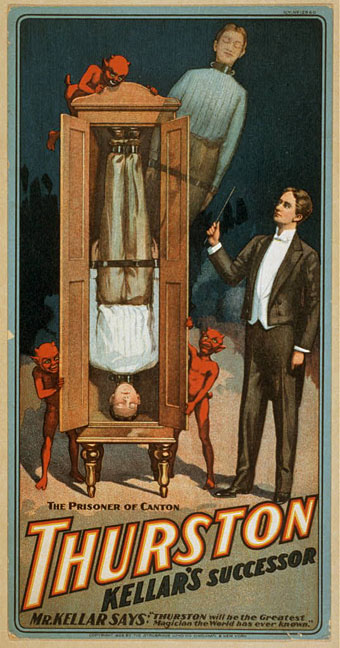
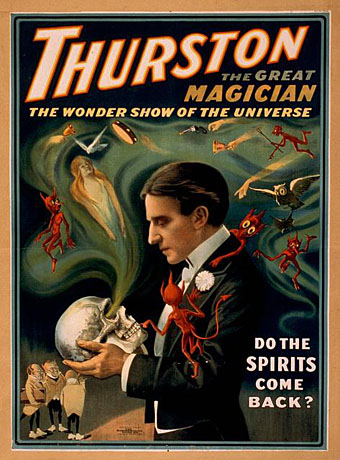
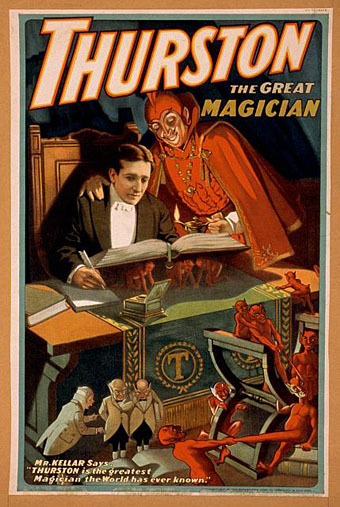
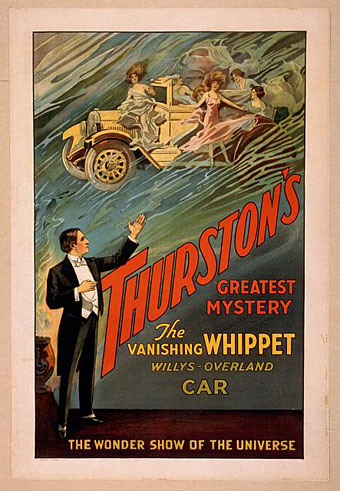
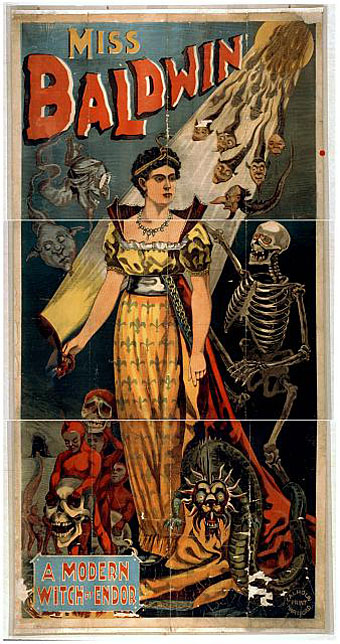
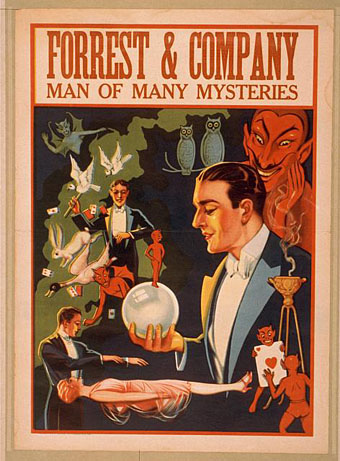
Previously on { feuilleton }
• Hodgson versus Houdini

I wonder if any of these could have served as an inspiration for The Prestige (either the book or the movie) ?
http://en.wikipedia.org/wiki/The_Prestige
http://en.wikipedia.org/wiki/The_Prestige_(film)
and totally unrelated … :-)
http://www.retronaut.com/2013/09/marijuana-los-angeles-jail/
totally related :-) … http://www.retronaut.com/2013/09/victorian-headless-photographs/
I’ve no idea what made Priest write his book although the posters are nicely suggestive.
Despite my interest in magic (or because of it) I didn’t enjoy the film. The whole premise–that someone would use an invention that could change human history simply to sustain a stage career–struck me as preposterous. I’ve wondered a few times whether the book was equally as silly or whether something was lost in the translation to the screen.
John:
I’ve always loved the Kellar posters. It should be noted that these were all designed and printed by Strobridge in Cincinnati. Strobridge, at the time, was probably doing work as good as any printer in the world (including the French printers) hence their nickname “the Tiffany of Printers.”
If you ever get a chance to see these in person, I urge you to do so – even the smaller lobby-card sized posters are amazing.
John
haven’t actually read the book myself. Watching the film I was probably to intereseted in the art direction and backgrounds to pay much attention to plot implausibilities but now that you mention it does seem an obvious fault. In any case it was nice to see Bowie doing his impression of Tesla in it. :-)
About “the Prestige”:
The book and the movie are, so to speak, worlds apart.
The book is written from the point of view of contemporary characters investigating about things that, supposedly, happened nearly a century earlier (with abstracts of diaries, letters, books, etc included): so the reader is never plainly told what really happened, and needs to figure this out by himself. In this context (characters asking themselves “Could it have been? Could really our grandparents have used an invention that could change human history simply to sustain a stage career? Or could they have done something even darker?”) the (implied) use of an implausible device makes much more sense than the “for real” using of said device does in the movie.
The movie is plagued, as so many adaptations are, by a painfully literal reading of the adapted novel.
It’s been a while since I read it but here’s what I can recall about the book. The novel is much more complex than the film and is in it’s own way a large convoluted stage trick that Priest is performing on the reader. The whole bit about twins is fairly obvious from the beginning and anyone who’s read any of his other book will be familiar with his obsession with doppelgangers and identical siblings.
Stage magicians are bound by secrecy about their tricks and from what I can remember from the story the feud between the two magicians is so great that the idea of the secret being revealed for the good of humanity (and thus to his rival) wouldn’t even have entered Angier’s mind. He was also using the process of the trick to duplicate whatever he had in his pockets at the time to counterfeit a large amount of money and obviously wanted to keep this secret too.
Also, there was only one machine built, Tesla either died or disappeared before building anymore and the way to reassemble and use the machine was lost with the demise of Angier.
Could it be that I forgot to say that these posters are amazing?
Tororo & m: Thanks, I would have expected the novel to be more sophisticated and detailed than the film. Nolan seemed worthy of attention when he started out but the more he does, the less interested I become.
The film of The Prestige was annoying in part for the way it “broke the rules” (for me) by having film trickery masquerading as magic, something films about stage magic often do. The Illusionist also does this but that film was better a whole, and also had a human quality that’s absent from Nolan’s work. He’s like the worst kind of science fiction writer, fascinated by a cool concept but with no interest in fleshing out his characters.